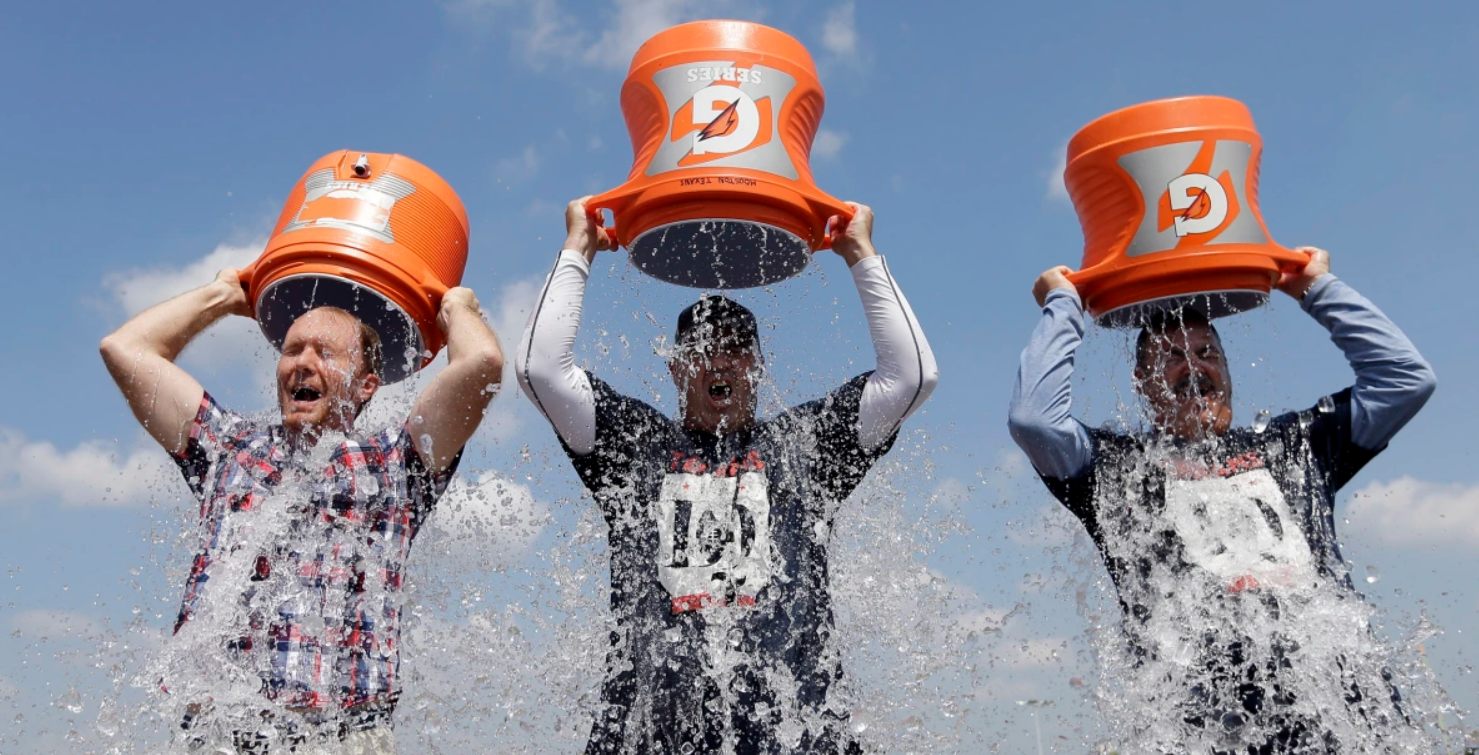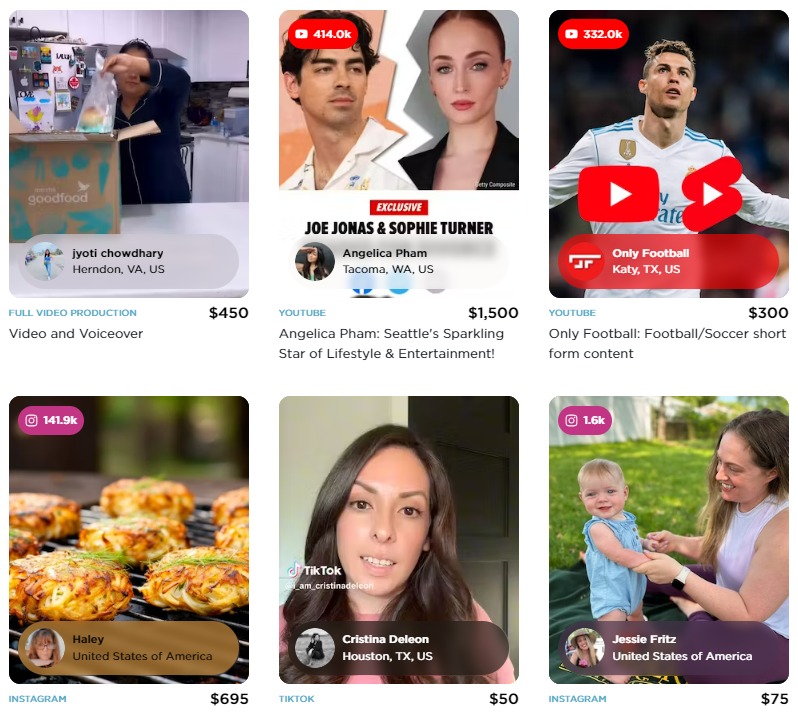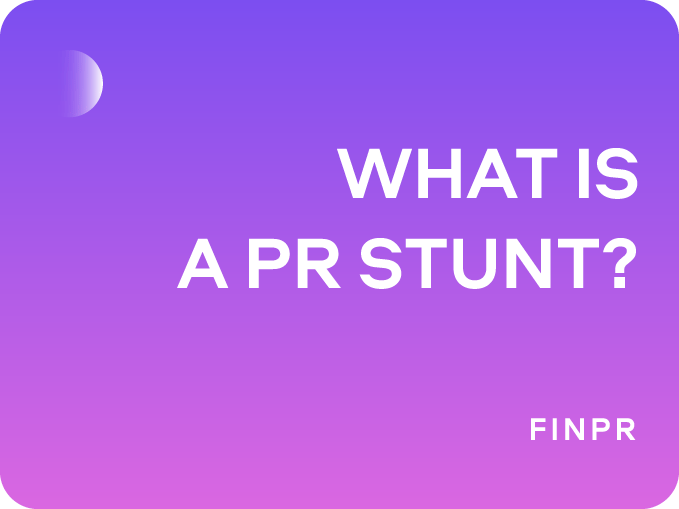
While traditional PR activities such as press releases and media relations are still important, there is a more audacious and attention-grabbing tactic that brands are increasingly turning to the public relations stunt. These carefully orchestrated events or campaigns are part of PR strategy and are designed to grab attention, make headlines, and make a lasting impression. But what exactly is a PR stunt? How does it differ from other PR activities and why has the term become so popular in the industry? Let's break down the phenomenon of PR stunts.
What is a Public Relations Stunt?
Defining PR Stunt
A Public Relations (PR) stunt is a planned event or campaign aimed at capturing the public's attention in a dramatic, often unconventional manner. Unlike traditional PR activities, which may involve more subdued methods like press releases or media interviews, a public relations stunt is designed to be bold, audacious, and highly visible. The primary goal is to generate buzz and media coverage, thereby elevating brand awareness and often influencing public opinion.
In essence, a PR stunt is a storytelling PR technique, but one that unfolds in the real world, often in real-time and is amplified through social media, news outlets, and word-of-mouth. It's a spectacle that's meant to be shared, talked about, and remembered. Whether it's a flash mob in a busy square, a viral challenge that sweeps across social media, or a high-profile celebrity endorsement, the publicity stunt aims to break through the noise and command attention.
While the term "stunt" might imply recklessness or a lack of substance, that's often far from the truth. Successful PR stunts are the result of meticulous planning, clear objectives, and a deep understanding of the target audience. They are strategic moves in a broader PR or marketing campaign, carefully crafted to resonate with consumers and make a lasting impact.
The next time you see a headline-grabbing event or a viral social media challenge, you'll likely be looking at a publicity stunt in action—a calculated, creative endeavor designed to capture imaginations and headlines alike.
The Objectives Behind PR Stunts
While the spectacle and drama of a publicity stunt might capture immediate attention, it's essential to understand that these events are not just for show. Behind the scenes, there are specific, measurable objectives that brands aim to achieve through these audacious acts. Here are some of the key goals that drive the creation and execution of PR stunts.
Generating Media Coverage
One of the primary objectives of a publicity stunt is to attract media attention. Brands aim to create something so compelling that news outlets can't resist covering it. This media coverage amplifies the reach of the stunt, allowing it to capture a much larger audience than it otherwise would. Moreover, media coverage often lends credibility to the stunt and, by extension, the brand itself.
Creating Brand Awareness
PR stunts are incredibly effective at boosting brand awareness. By doing something out of the ordinary, brands can differentiate themselves from competitors and stick in the minds of consumers. Whether it's a memorable visual, an emotional connection, or a thought-provoking message, the elements of a successful publicity stunt are designed to leave a lasting impression.
Influencing Public Opinion
Well-executed PR stunts have the power to shape or reshape public opinion about a brand or cause. For example, a company that has recently faced negative press might use a publicity stunt to shift the narrative and generate positive buzz. Alternatively, a brand may use a stunt to position itself as a leader in innovation, social responsibility, or customer engagement.
Driving Customer Engagement
In today's digital age, customer engagement goes beyond mere awareness. Brands use PR stunts to encourage interaction, whether it's sharing a hashtag, participating in a challenge, or contributing to a cause. This active engagement not only amplifies the stunt's reach but also fosters a sense of community and loyalty among consumers.
Promoting New Products or Services
Launching a new product or service is often accompanied by a publicity stunt aimed at generating excitement and curiosity. By tying the launch to an attention-grabbing event, brands can ensure that their new offering stands out in a crowded market and garners initial traction.
Supporting Social Causes
Increasingly, PR stunts are being used to bring attention to social issues or charitable causes. These stunts aim to not only raise awareness but also inspire action, whether it's donations, volunteer work, or advocacy.
Historical Context
The field of Public Relations itself was formalized in the early 20th century, with pioneers like Edward Bernays and Ivy Lee laying the groundwork. These early PR practitioners recognized the power of influencing public opinion and utilized various tactics, including what we would now consider PR stunts, to achieve their objectives.
The concept of a publicity stunt is not a new phenomenon. It has roots that stretch back well before the age of social media and even television. Understanding the historical context of PR stunts can offer valuable insights into their evolution and enduring relevance.
The media landscape has played a significant role in the evolution of PR stunts. In the early days, newspapers and radio were the primary channels for reaching the public. With the advent of television, the scope and impact of PR stunts grew exponentially. Today, the internet and social media platforms have become the new frontier, offering unprecedented reach and engagement opportunities.
As society has evolved, so too have the themes and messages behind PR stunts. Early stunts often focused on awe and spectacle, while modern stunts are more likely to incorporate social issues, ethical considerations, and interactive elements to engage the audience more deeply.
Technological advancements have also shaped the nature of PR stunts. From the use of drones for aerial displays to augmented reality experiences that blend the digital and physical worlds, technology has expanded the toolkit available for creating captivating stunts.
Types of PR Stunts
The realm of PR stunts is as varied as it is captivating, offering a plethora of options that can be tailored to meet specific objectives, target different audiences, and fit various industries.
Guerrilla Marketing Stunts
Guerrilla marketing stunts are unconventional and often rely on the element of surprise to make an impact. These stunts are usually low-cost and highly creative, ranging from flash mobs to street art installations and pop-up events. The advantage of guerrilla marketing is its cost-effectiveness and the high potential for virality. However, these stunts can sometimes backfire if they provoke negative public reactions, and there's often less control over the messaging.
Viral Challenges
Viral challenges are another popular form of publicity stunt. These involve encouraging people to perform a specific task and share it on social media, thereby spreading awareness rapidly. Challenges like the Ice Bucket Challenge for ALS awareness or the Mannequin Challenge have taken the internet by storm.

While many of these challenges start as grassroots movements, they can be adopted or even initiated by brands to serve as effective PR stunts. The power of viral challenges lies in their ability to leverage user-generated content and social sharing to achieve a massive reach.
Celebrity Endorsements and Partnerships
Incorporating celebrities into a publicity stunt can significantly elevate its impact. Celebrities bring their own following, media attention, and a level of credibility to the stunt. For example, Red Bull's Stratos Jump featuring skydiver Felix Baumgartner captured global attention, in part due to the celebrity factor. Such endorsements can make a publicity stunt appealing to a broader audience and amplify its reach exponentially.
Social Cause Campaigns
Increasingly, PR stunts are being used to bring attention to social or environmental issues. These stunts often partner with non-profit organizations to raise awareness and inspire action. Brands like Dove with their Real Beauty campaign or Ben & Jerry's with their climate change initiatives have used PR stunts to great effect in this area. While these campaigns can significantly enhance a brand's reputation, they must be executed sensitively to avoid accusations of "cause-washing" or insincerity.
Experiential Events
Experiential events are immersive experiences that allow consumers to engage with a brand in a unique and often interactive environment. These could be pop-up shops that offer exclusive products, virtual reality experiences that transport consumers to different worlds, or themed events like a brand's Comic-Con booth. These events are highly engaging and offer memorable experiences but can be logistically complex and costly to execute.
Digital and Virtual Stunts
The digital age has given rise to a new kind of publicity stunt: the online or virtual stunt. These stunts leverage platforms like social media, streaming services, and online communities to reach a global audience. Examples include Reddit's Ask Me Anything sessions, Twitter takeovers, or live-streamed events. The advantage of digital stunts is their global reach and the ease with which their impact can be measured. However, they also come with their own set of challenges, such as the risk of technical issues or online backlash.
The Anatomy of a Successful PR Stunt
Planning and Strategy
The spectacle of a publicity stunt might give the impression of spontaneity, but the reality is far from it. Behind every successful publicity stunt lies meticulous planning and a well-thought-out strategy. Here's a closer look at the critical elements that go into the planning and strategy phase of a publicity stunt.
Understanding the Target Audience:
- Identifying the demographic and psychographic characteristics of the intended audience
- Researching audience preferences, behaviors, and pain points
- Tailoring the stunt's message and medium to resonate with this audience
Setting Clear Objectives:
- Defining what success looks like for the publicity stunt
- Establishing Key Performance Indicators (KPIs) to measure success
- Aligning the stunt's objectives with broader marketing and PR goals
Conducting a SWOT Analysis:
- Assessing the Strengths, Weaknesses, Opportunities, and Threats related to the stunt
- Evaluating the brand's resources and capabilities to execute the stunt effectively
- Identifying potential challenges and devising strategies to overcome them
Risk Assessment and Contingency Planning:
- Identifying potential risks, such as negative public reaction, logistical failures, or legal issues
- Developing contingency plans to mitigate these risks
- Preparing crisis communication strategies in case the stunt doesn't go as planned
Budgeting and Resource Allocation:
- Estimating the costs involved in executing the stunt, including production, promotion, and monitoring
- Allocating resources efficiently to ensure the stunt is both impactful and cost-effective
Collaborative Brainstorming:
- Involving cross-functional teams, including marketing, PR, legal, and operations, in the planning process
- Encouraging creative brainstorming sessions to come up with innovative ideas
- Evaluating the feasibility and impact of each idea before finalizing the stunt concept
Timeline and Milestones:
- Creating a detailed timeline that outlines each phase of the stunt, from planning to execution to evaluation
- Setting milestones to track progress and ensure that the project stays on schedule
Legal and Ethical Considerations:
- Consulting legal experts to review the stunt for potential legal issues, such as permits, copyrights, or trademarks
- Ensuring the stunt aligns with ethical standards and social responsibilities
Finalizing the Plan:
- Consolidating all the elements into a comprehensive strategy document
- Gaining approval from key stakeholders
- Briefing the execution team and ensuring everyone is aligned with the plan
Execution
Once the planning and strategy phase is complete, the next critical step is the execution of the publicity stunt. This is the moment where all the meticulous planning comes to life, and the brand's vision is put to the test. Here's a breakdown of the key components involved in the successful execution of a publicity stunt.
Timing and Location:
- Choosing the optimal time and place to launch the stunt, considering factors like audience availability, media cycles, and competing events
- Ensuring all permits and permissions are in place if the stunt involves public spaces or special equipment
Team Coordination:
- Briefing the entire team on their roles and responsibilities
- Conducting rehearsals or dry runs to iron out any kinks
- Establishing communication channels to ensure smooth coordination during the stunt
Social Media and Digital Platforms:
- Utilizing social media to build anticipation before the stunt and to share live updates during the event
- Leveraging other digital platforms like email newsletters, blogs, or streaming services to broaden the stunt's reach
Celebrity or Influencer Collaboration:
- If the stunt involves celebrities or influencers, coordinating with their teams for promotional activities. Engaging with crypto influencers in the Web3 space has been popular lately
- Ensuring that their messaging aligns with the brand's objectives and message

Technical Aspects:
- Overseeing the technical setup, including any audio-visual equipment, props, or special effects
- Conducting last-minute checks to ensure everything is functioning as planned
Audience Engagement:
- Implementing strategies to engage the audience, both online and offline, during the stunt
- Encouraging social sharing, participation, and feedback through interactive elements
Documentation:
- Capturing high-quality photos and videos of the stunt for later analysis, media coverage, and promotional activities
- Collecting data and metrics in real-time to gauge the stunt's impact
Measurement and Analysis
The final, yet crucial, phase in the anatomy of a successful publicity stunt is measurement and analysis. While the spectacle and excitement may have concluded, the work is far from over. Brands must now assess the impact of the stunt to understand its effectiveness and ROI (Return on Investment). Here's how to approach this critical post-stunt phase:
Key Performance Indicators (KPIs):
- Revisiting the KPIs established during the planning phase to evaluate the stunt's success
- Metrics may include media impressions, social media engagement, website traffic, lead generation, and more
Media Coverage Analysis:
- Compiling all media coverage, both online and offline, to assess the stunt's reach and impact
- Evaluating the tone and quality of the coverage: Was it positive, neutral, or negative?
- Calculating the estimated media value compared to the cost of executing the stunt
Social Media Metrics:
- Analyzing social media engagement, including likes, shares, comments, and hashtag usage
- Using analytics tools to measure reach, impressions, and audience demographics
- Assessing the virality factor: Did the stunt spark conversations and get shared organically?
Audience Feedback and Sentiment Analysis:
- Collecting and reviewing audience feedback through surveys, social media mentions, and direct interactions
- Conducting sentiment analysis to gauge public opinion and emotional response to the stunt
Sales and Conversion Metrics:
- If applicable, tracking any uplift in sales, subscriptions, or other conversion metrics that were objectives of the stunt
- Using tracking codes or specialized landing pages to directly attribute conversions to the stunt
ROI Calculation:
- Combining all the collected data to calculate the ROI of the stunt
- Assessing whether the benefits, both tangible and intangible, justify the costs and resources invested
Stakeholder Reporting:
- Compiling all findings into a comprehensive report for stakeholders, complete with data visualizations and actionable insights
- This report serves as a valuable tool for future planning and strategy development
FAQ
Why do companies use PR stunts?
Companies use PR stunts to achieve various goals, including increasing brand awareness, promoting a new product or service, generating positive media coverage, and creating viral content on social media. PR stunts can also help brands differentiate themselves from competitors and connect with their target audience in a memorable way.
How do PR stunts work?
PR stunts work by capturing the attention of the media and the public. They often involve a combination of creativity, novelty, and timing. The stunt is carefully planned and executed to ensure it aligns with the brand's messaging and objectives. The media coverage and social media shares that result from a successful PR stunt can significantly amplify the message and reach a broader audience.
Are PR stunts only for big brands?
No, PR stunts are not exclusive to big brands. While larger companies may have more resources to invest in elaborate stunts, PR stunts can be tailored to fit the budget and goals of businesses of all sizes. Smaller businesses can still create effective PR stunts that resonate with their target audience and generate buzz within their community or industry.
Are PR stunts always successful?
Not all PR stunts are successful, and their effectiveness can vary. Success depends on factors such as the creativity of the idea, the execution, timing, and the ability to generate media coverage and engagement. A well-planned and executed PR stunt is more likely to be successful, but there are no guarantees in the world of PR.
What are the risks associated with PR stunts?
PR stunts can carry risks, such as negative public perception if the stunt is perceived as insensitive, offensive, or in poor taste. There's also the risk of the stunt not achieving its intended goals or failing to generate significant media coverage. Therefore, careful planning and consideration of potential risks are essential.
How can I plan a PR stunt for my business?
Planning a PR stunt involves identifying your goals, target audience, and budget. You'll also need to brainstorm creative ideas that align with your brand's message and values. Consider seeking the assistance of PR professionals or agencies with experience in executing successful stunts to help bring your idea to life.
Can PR stunts have a long-term impact?
While PR stunts are often designed for short-term attention, they can have a long-term impact if they align with a broader marketing and branding strategy. Successful stunts can boost brand recognition and reputation, leading to sustained benefits if leveraged effectively in a brand's overall marketing efforts.
Are PR stunts ethical?
PR stunts are ethical as long as they do not deceive or harm the public, violate any laws, or intentionally mislead the media and stakeholders. Transparency and accountability are critical to maintaining ethical standards.
How much do PR stunts cost?
The cost of PR stunts can vary widely from a few hundred dollars for a small, local event to millions for a large-scale international event. The cost will depend on the scope, location, talent involved, and resources required to pull off the stunt.
Can PR stunts backfire? How?
Yes, PR stunts can backfire if they are poorly executed, offend the public, or come across as too promotional. They can also fail if they are ill-timed or insensitive to current events. Such negative outcomes can lead to bad press and damage to the brand’s reputation.
Final Thoughts
The art of the PR stunt is a fascinating blend of creativity, strategy, and execution. Far from being mere spectacles, these carefully orchestrated events serve as powerful tools for brands to capture attention, influence public opinion, and achieve specific objectives. From the meticulous planning that lays the foundation to the adrenaline-filled execution that brings the vision to life, each phase of a publicity stunt is critical to its overall success.
In today's saturated media landscape, where consumers are bombarded with information from all sides, PR stunts offer a unique way to cut through the noise and make a lasting impression.




